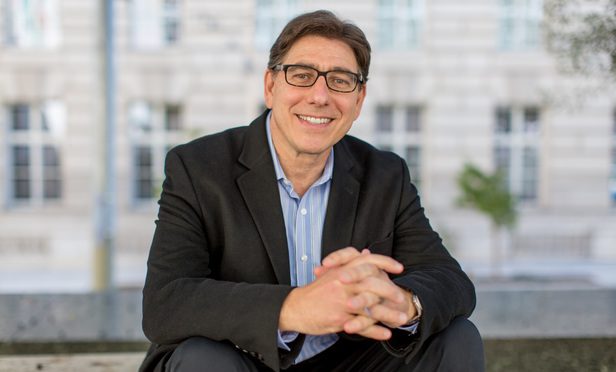UC Law SF on the Move, Even as Measured by US News

David Faigman, Hastings College of the Law
With the publication today of US News & World Report’s (USNWR) annual rankings of law schools, it is a propitious time to take stock of the state of UC Law SF. As detailed below, the news is good.
However, before getting into those details, I must admit that, because it has been such a difficult year, I feel ambivalent about celebrating anything in the midst of so much loss, including COVID-related deaths and disruption, racial injustice and violence, and suffering at our borders. Therefore, as a community, we should all pause for a moment of reflection, for however well we might be doing as an institution or as individuals, there is much yet in society requiring our attention. Our legal training gives us the skill, and imposes the obligation, to do what we can to redress injustice wherever it might exist.
At UC Law SF, while we still have much work to do on many fronts to advance our academic and public service missions and strategic plan, our trajectory is excellent and we are building incredible momentum as we move forward.
The construction of the UC Law SF Academic Village is well on its way. Next year, students will attend classes in our new academic building at 333 Golden Gate, the Cotchett Law Center, which was completed this past year, just as the pandemic hit. Major renovations of Kane Hall at 200 McAllister, to be completed this spring, include classroom and center space on the sixth floor, two large classrooms on the first floor, and an expanded and welcoming lobby area. And the venerable Snodgrass Hall at 198 McAllister is almost completely gone, as our contractor prepares to “come out of the ground” with our new 14-story high jewel of a building, which will provide significant additional academic space and 656 units of below-market student housing.
The brick-and-mortar projects, however, are merely vessels to accommodate our outstanding academic programs. These are too numerous to describe in detail, but include ten scholarly journals; trial and appellate advocacy and dispute resolution programs; a wide array of clinics and other cutting edge experiential programs; a constantly-evolving curriculum that is as wide and deep as any in the country; and research and programmatic centers specializing in vital issues such as healthcare, work-life balance, immigration, business, tax, innovation, and the intersection of law and technology. Just over the past year, we introduced three additional centers, the Center for Racial and Economic Justice, the Indigenous Law Center, and the Center for Litigation and Courts.
Our students, staff and faculty have similarly remained energized and successful during this otherwise challenging time. Our 2020 graduates had an 87% first-time pass-rate on the October 2020 administration of the California Bar Exam (86% overall for our first-time takers). Our Moot Court team, ranked #1 in the nation, continues to rack up impressive wins. Our faculty continue to produce impactful scholarship and apply their expertise not only in our classrooms but also as witnesses at hearings in Congress and state legislatures, advocates filing amicus briefs, and public intellectuals addressing the most pressing issues of the day.
It is around this time each year when USNWR publishes its annual rankings. Those rankings were published today and the news is good. I have previously shared my view that rankings are a pale reflection of the quality of a law school. Nonetheless, I also know that many put considerable stock in them, including prospective students and future employers. Hence, we cannot ignore them. Moreover, there are data within the data that carry some meaning, including the rankings of specialty programs.
Our overall ranking this year improved nine places, from 59 to 50. Although we have yet to examine the data in depth, the overall rank appears to be partly a function of improvements in how our peer institutions perceive us (moving from 43 to 40), and how lawyers and judges assess us (moving from 32 to 27). Without question, these are positive trends. Our graduates’ improved bar and employment outcomes likely also contributed to our jump in the U.S. News overall ranking.
More meaningful, in my view, are our specialty program rankings, because those come from surveys of faculty in the respective area of expertise. We have ten programs in the top 30 nationally, with four of those in the top 20, and one in the top ten. These include, Dispute Resolution (8), Healthcare Law (13), Tax Law (16), Clinical Training (19), Trial Advocacy (21), Environmental Law (24), International Law (26), Business/Corporate Law (28), Intellectual Property Law (30), and Criminal Law (30).
Our success to date is attributable to a community-wide effort. Students, staff, and faculty have gone above and beyond to create not only a first-class institution of higher education, but one that is devoted to ensuring that all members of our community feel cherished and included. Moreover, our alumni community—22,000 strong—has stepped up in a big way, providing mentorship opportunities for our students, networking opportunities for our graduates, and financial support for scholarships, bar study, and the academic program generally. Just over the last three years, alumni donations have tripled.
While we have indeed accomplished much in recent years, these accomplishments are but a springboard for more yet to come. Now is the time to build on our success. I look forward to working with you in the years ahead as we further establish UC Law SF as one of the preeminent law schools in the nation.
I wish you all the best, good health, and please stay safe.
Warm regards,
David
David L. Faigman
Chancellor and Dean
John F. Digardi Distinguished Professor of Law
University of California Hastings College of the Law